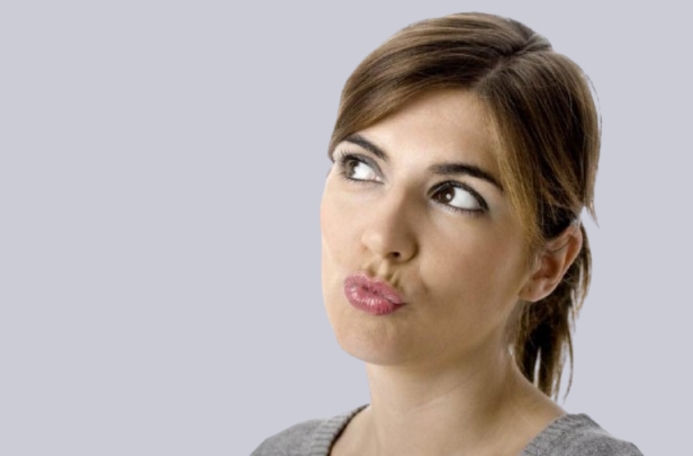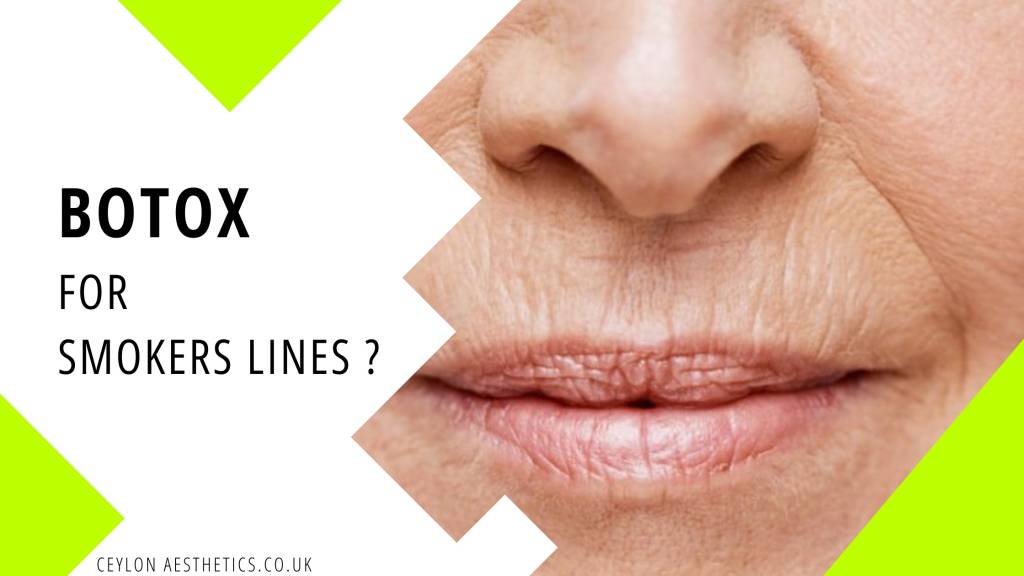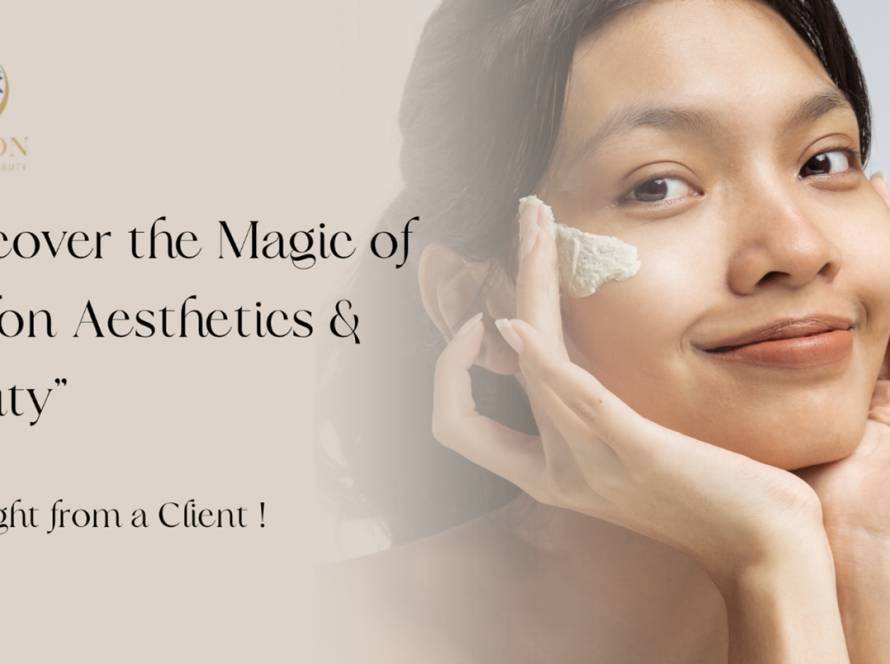Ever glanced in the mirror and wondered when those tiny vertical lines above your lip turned into a full-on barcode?
Well…you’re not alone!
These vertical creases, often called smokers’ lines, lip lines, or barcode lines, can sneak up on you, adding years to your appearance and giving your lips that unintentionally puckered, duck face look—even when you’re not trying.

What are Smokers Lines?
Smokers lines are the fine vertical wrinkles that form above the upper lip sometimes extending around the mouth.
As we mentioned, you don’t have to be a smoker to develop them, though smoking certainly accelerates their appearance due to repeated puckering and reduced collagen production.
These lines are primarily caused by,
1. Loss of Collagen & Elastin (Aging)
As we age, our skin produces less collagen and elastin, the proteins responsible for keeping skin firm and elastic. Research from the Journal of Investigative Dermatology confirms that collagen production declines by about 1% per year after age 30, leading to thinner, less resilient skin.
2. Sun Damage (Photoaging)
UV rays break down collagen and elastin fibers, worsening wrinkles. A study in Clinical, Cosmetic and Investigational Dermatology found that up to 90% of visible skin aging is caused by sun exposure, not just genetics.
3. Repetitive Facial Movements (Dynamic Wrinkles)
Every time you pucker your lips (sipping, smoking, whistling, or even applying lipstick), the orbicularis oris muscle contracts, gradually etching lines into the skin. Over time, these dynamic wrinkles become static wrinkles that will be visible even at rest.
4. Volume Loss & Dehydration
As fat pads in the face diminish, the skin around the lips loses support, making wrinkles more pronounced. Additionally, dehydrated skin due to poor skincare or environmental factors can make fine lines appear deeper.
While topical creams and serums can provide temporary hydration, they often fall short of delivering long-lasting results, and this is where treatments like Botox come into play.
Can Botox Really Help Smokers Lines?
Botox (botulinum toxin) is renowned for its ability to relax dynamic wrinkles—those caused by muscle movement.
While it’s most commonly used for forehead lines, crow’s feet, and frown lines, it can also be effective for certain types of smokers lines, particularly those exacerbated by muscle activity around the mouth.
How Botox Works for Lip Lines
When injected strategically into the orbicularis oris muscle, the muscle responsible for puckering, Botox temporarily weakens its contractions.
This reduces the repetitive motion that deepens lip lines over time, resulting in smoother skin.

A study published in Dermatologic Surgery supports the use of neuromodulators like Botox for perioral wrinkles, noting significant improvement in patients with moderate to severe lines.
However, Botox isn’t a one-size-fits-all solution. Its effectiveness depends on,
- The depth of your lines (superficial vs. deep-set)
- The cause of your wrinkles (muscle movement vs. volume loss)
- Your skin’s overall condition(sun damage, elasticity)
For deeper lines caused by volume loss rather than muscle movements, dermal fillers may be a better option.
We’ll explore this briefly later, but if you’re curious about fillers, check out our next post on fillers for a deeper look at the efficacy of this treatment.
What to Expect During a Botox Treatment for Smokers Lines
If you’re considering Botox for smokers’ lines, here’s a step-by-step breakdown of the process,
- Consultation – A skilled practitioner at Ceylon Aesthetic Clinic will assess your lip lines, discuss your goals, and determine if Botox is the right approach.
- Treatment – Using ultra-fine needles, small amounts of Botox are injected into precise points around the mouth. The procedure takes just 15–30 minutes, with minimal discomfort (many describe it as a quick pinch).
- Recovery – There’s no downtime — you can resume normal activities immediately. Some redness or slight swelling may occur but it fades within hours.
- Results – You’ll start noticing smoother lips within 3–5 days, with full effects visible after two weeks. Results typically last 3–4 months, though this varies by individual.
Why Choose Botox Over Other Treatments?
- Non-surgical: No incisions or lengthy recovery.
- Preventative: Regular treatments can prevent lines from worsening.
- Natural-looking: When administered by an expert, Botox subtly softens lines without freezing expression.
Success Rate?
Patients report high satisfaction with Botox for smokers’ lines, especially when seeking natural-looking results. Most appreciate the quick, low-downtime nature of the treatment.
However, the key to satisfaction is a conservative, tailored approach—too much Botox can lead to a “flattened” look or difficulty moving the lips naturally.
Common Side Effects
- Mild redness, swelling, or bruising at the injection site (usually resolves within a few days)
- Temporary numbness or tingling
- Rarely, asymmetry or difficulty with lip movement (usually due to over-injection or poor technique)
Serious Risks (Rare)
- Droopy smile or speech changes (usually temporary)
- Allergic reactions (extremely rare)
Who Should Avoid Botox?
- Pregnant or breastfeeding women
- People with neuromuscular disorders (like myasthenia gravis)
- Those with known allergies to botulinum toxin ingredients
Botox vs. Fillers: Which Is Right for Smokers Lines?
it’s also worth noting that fillers (hyaluronic acid-based injectables) address volume loss, while Botox targets muscle movement. For deeper, static lines, a combination of both may be ideal.
However, we’ll delve deeper into fillers in a future post, so bookmark our blog page for updates!
Comparing Botox to Other Treatments for Smokers Lips
| Treatment | Best For | Onset | Duration | Pros | Cons |
| Botox | Fine, dynamic lines | 3–7 days | 3–4 months | Quick, minimal downtime | Temporary weakness, not for deep lines |
| Dermal Fillers | Deep/static lines | Immediate | 9–18 months | Instant results, adds volume, versatile | Swelling, rare lumps, higher cost |
| Laser Resurfacing | Moderate/deep lines | Weeks | Long-lasting | Major improvement, improves skin texture | Downtime, redness, higher cost |
| Microneedling | Mild/moderate lines | Weeks | Months | Minimal downtime, improves skin quality | Multiple sessions needed, gradual results |
| PRP | Mild/moderate lines | Weeks | Months | Natural, low allergy risk | Multiple sessions, subtle effects |
| Chemical Peels | Surface/moderate lines | Weeks | Varies | Improves tone/texture, affordable | Redness, irritation, some downtime |
The Holistic Approach for Treating Smokers’ Lines
In recent years, the trend in aesthetic medicine has shifted toward combination treatments, recognizing that no single method addresses all the underlying causes of smokers lines.
Many practitioners now recommend a tailored approach. For instance, a patient might receive Botox to relax the muscles, fillers to restore lost volume, and a fractional laser treatment to boost collagen and improve skin texture.
This multi-pronged strategy not only delivers the most natural and comprehensive results but also allows each treatment to complement and enhance the effects of the others.
While medical treatments are highly effective, optimizing and maintaining your results also depends on your daily skincare and lifestyle choices.
Sun protection is absolutely crucial; ultraviolet rays are the primary driver of premature skin aging and can quickly undo the benefits of any cosmetic procedure.
Applying a broad-spectrum SPF 50 sunscreen every morning, even on cloudy days, helps prevent new lines from forming and protects your investment in professional treatments.
Topical retinoids, available both over the counter and by prescription, are another cornerstone of anti-aging skincare. These vitamin A derivatives stimulate collagen production, improve cell turnover, and gradually reduce the appearance of fine lines.
Although they will not erase deep smokers lines, regular use can enhance skin texture and make lines less noticeable, especially when combined with professional treatments.
Some people also turn to natural home remedies, such as coconut oil, argan oil, or avocado masks, to nourish and soften the skin.
While these treatments are unlikely to make a dramatic difference in established wrinkles, they can provide antioxidant benefits and help maintain the results of more intensive procedures.

Lifestyle factors should not be overlooked. Avoiding smoking is essential, as tobacco smoke not only accelerates the breakdown of collagen and elastin but also deprives the skin of vital nutrients and oxygen.
A diet rich in antioxidants—think colorful fruits and vegetables, nuts, and fatty fish—can help combat oxidative stress and support skin repair from within.
Ultimately, the most effective strategy for treating smokers lines is a holistic one. Botox remains the top choice for dynamic, movement-related wrinkles and works beautifully as part of a combination plan.
FAQs About Smokers Lines Botox
1. Can Botox get rid of smoker’s lines permanently?
No, Botox offers temporary results (3–4 months). Maintenance sessions are needed for ongoing improvement.
2.Does Botox for lip lines affect speech or eating?
When administered correctly, Botox shouldn’t interfere with normal functions. Choosing an experienced injector is key.
3.Are there side effects?
Mild bruising or asymmetry is possible but rare with a skilled practitioner.
Ready to Smooth Your Smokers Lines?
If you’re tired of seeing those stubborn lip lines every day, Botox could be your solution. At Ceylon Aesthetic Clinic, we specialize in natural-looking, tailored treatments to help you regain confidence in your skin.
So, book your consultation today and let’s create a personalized plan for smoother, younger-looking lips.
Have questions? Our team is here to help—contact us anytime!
References
- Morita Akimichi. “Tobacco smoke causes premature skin aging.” ScienceDirect (2007).1
- “A Clinical Trial Shows Improvement in Skin Collagen, Hydration, and Wrinkle Appearance.” PMC (2024).2
- “How Smoking Affects the Way You Look.” ASH (2015).3
- Morita Akimichi, Torii Kan, Maeda Akira, Yamaguchi Yuji. “Molecular Basis of Tobacco Smoke-Induced Premature Skin Aging.” ScienceDirect (2009).4
- “Influences on Skin and Intrinsic Aging: Biological, Environmental, and Lifestyle Factors.” Wiley Online Library (2024).5
- “Effect of the sun on visible clinical signs of aging in Caucasian skin.” PMC (2013).6
- “Guidelines on the use of botulinum toxin Type A.” IJDVL (2008).7
- “Influences on Skin and Intrinsic Aging: Biological, Environmental, and Lifestyle Factors.” PMC.8
- “How dermatologists treat sun-damaged skin.” American Academy of Dermatology (2025).9
- Satriyasa, Bagus Komang. “Botulinum toxin (Botox) A for reducing the appearance of facial wrinkles: a literature review of clinical use and pharmacological aspect.” PMC (2019).10
- “Evaluation of the Efficacy of a Hydrolyzed Collagen Supplement for Improving Skin Moisturization and Elasticity.” JCAD Online.11
- “The Sun, Skin and Aging – Dermatology.” UC Davis Health.12
- “Botulinum toxin type A for facial wrinkles.” PubMed (2021).13
- “Anti-Aging Effects of Low-Molecular-Weight Collagen Peptide.” MDPI.14
- Kumari et al. “Sun Exposure Habits and Their Impact on Skin Aging.” International Journal of Current Pharmaceutical Review and Research.15
- “OnabotulinumtoxinA DoseRanging Study for Hyperdynamic Perioral Lines.” Aesthetic Solutions.16
- “Sun damage and your skin.” American Academy of Dermatology.17
- “Botulinum Toxin A Treatment of Perioral Rhytides.” Dermatologic Surgery.18
- “Skin ageing.” DermNet.19
- “Botulinum toxin in the lower one third of the face.” ScienceDirect.20



